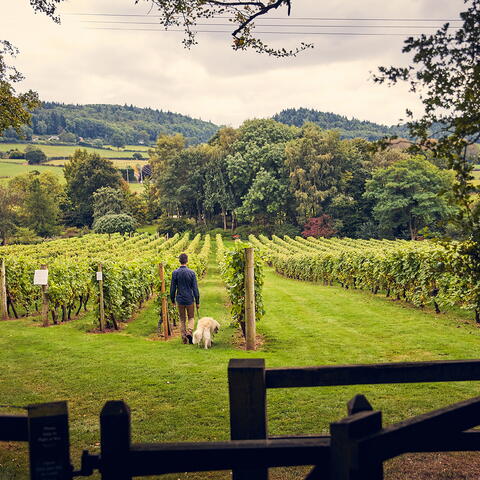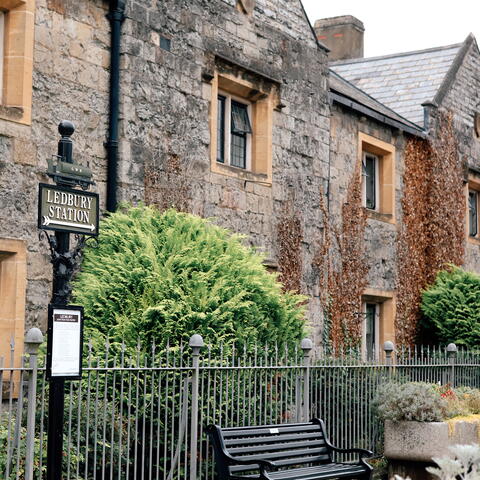Fromes Hill to Ledbury
Shortly after crossing the A4103 over Fromes Hill, the trail walker can return to the peace of deep country and the quiet, unpaved byways of another era. In autumn, the old green lanes are fringed with blackberries and damson trees sprawling from hedgerows.
Route Guide
In the Vale of Leadon, close to its little river, sits Bosbury, an important village with a wealth of listed buildings, including the fortress-like 13th-century detached
bell tower. Nationally rare, Herefordshire has more detached bell towers (seven) than any other county. They were built for defence as well as religion. The medieval Bishops of Hereford owned Bosbury manor - a remnant stone gateway survives of their former Bishops Palace, a favoured retreat. Nearby, a moated site of a Knights Templar preceptory is now Temple Court.
The trail passes between rows of grapevines at Coddington Vineyard, which produces several English white wines and offers tastings and tours. Soon after, on 690-feet high Oyster Hill (the name of one of the wines) you can pause at a seat with a fine view.
Hope End (‘valley end’), a former deer park that once belonged to the Bishops, was the childhood playground of poet Elizabeth Barrett Browning (1806-1861).
Here she honed her craft and, aged nine, was dubbed ‘Poet Laureate of Hope End’ by her father. The extravagant ‘Moorish-style’ house with minarets he spent years building was largely demolished and replaced within the century. Elizabeth loved the parkland which remains a scenic treasure. The woodlands were the setting of her poem The Lost Bower.
Your path tracks the western edge of the Malvern Hills Area of Outstanding Natural Beauty, hills which inspired William Langland’s 14th century verse epic Piers Plowman and the music of 19th-century composer, Sir Edward Elgar. The trail ends at Ledbury, birthplace of the literary giant and former Poet Laureate John Masefield (1878-1967) who spoke with passion about his love of the local landscape.
Route Highlights








